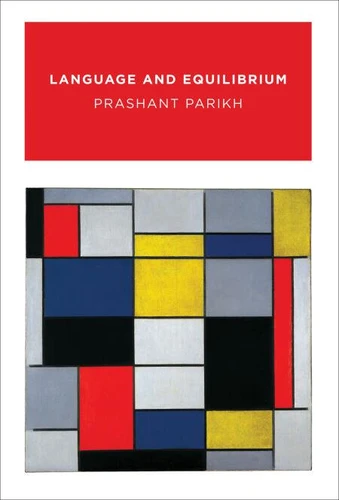Language and Equilibrium
Par :Formats :
Disponible dans votre compte client Decitre ou Furet du Nord dès validation de votre commande. Le format ePub protégé est :
- Compatible avec une lecture sur My Vivlio (smartphone, tablette, ordinateur)
- Compatible avec une lecture sur liseuses Vivlio
- Pour les liseuses autres que Vivlio, vous devez utiliser le logiciel Adobe Digital Edition. Non compatible avec la lecture sur les liseuses Kindle, Remarkable et Sony
- Non compatible avec un achat hors France métropolitaine
 , qui est-ce ?
, qui est-ce ?Notre partenaire de plateforme de lecture numérique où vous retrouverez l'ensemble de vos ebooks gratuitement
Pour en savoir plus sur nos ebooks, consultez notre aide en ligne ici
- Nombre de pages360
- FormatePub
- ISBN978-0-262-29166-8
- EAN9780262291668
- Date de parution15/01/2010
- Protection num.Adobe DRM
- Taille4 Mo
- Infos supplémentairesepub
- ÉditeurThe MIT Press
Résumé
A new framework that shows how to derive the meaning of an utterance from first principles by modeling it as a system of interdependent games. In Language and Equilibrium, Prashant Parikh offers a new account of meaning for natural language. He argues that equilibrium, or balance among multiple interacting forces, is a key attribute of language and meaning and shows how to derive the meaning of an utterance from first principles by modeling it as a system of interdependent games.
His account results in a novel view of semantics and pragmatics and describes how both may be integrated with syntax. It considers many aspects of meaning-including literal meaning and implicature-and advances a detailed theory of definite descriptions as an application of the framework. Language and Equilibrium is intended for a wide readership in the cognitive sciences, including philosophers, linguists, and artificial intelligence researchers as well as neuroscientists, psychologists, and economists interested in language and communication.
His account results in a novel view of semantics and pragmatics and describes how both may be integrated with syntax. It considers many aspects of meaning-including literal meaning and implicature-and advances a detailed theory of definite descriptions as an application of the framework. Language and Equilibrium is intended for a wide readership in the cognitive sciences, including philosophers, linguists, and artificial intelligence researchers as well as neuroscientists, psychologists, and economists interested in language and communication.
A new framework that shows how to derive the meaning of an utterance from first principles by modeling it as a system of interdependent games. In Language and Equilibrium, Prashant Parikh offers a new account of meaning for natural language. He argues that equilibrium, or balance among multiple interacting forces, is a key attribute of language and meaning and shows how to derive the meaning of an utterance from first principles by modeling it as a system of interdependent games.
His account results in a novel view of semantics and pragmatics and describes how both may be integrated with syntax. It considers many aspects of meaning-including literal meaning and implicature-and advances a detailed theory of definite descriptions as an application of the framework. Language and Equilibrium is intended for a wide readership in the cognitive sciences, including philosophers, linguists, and artificial intelligence researchers as well as neuroscientists, psychologists, and economists interested in language and communication.
His account results in a novel view of semantics and pragmatics and describes how both may be integrated with syntax. It considers many aspects of meaning-including literal meaning and implicature-and advances a detailed theory of definite descriptions as an application of the framework. Language and Equilibrium is intended for a wide readership in the cognitive sciences, including philosophers, linguists, and artificial intelligence researchers as well as neuroscientists, psychologists, and economists interested in language and communication.



